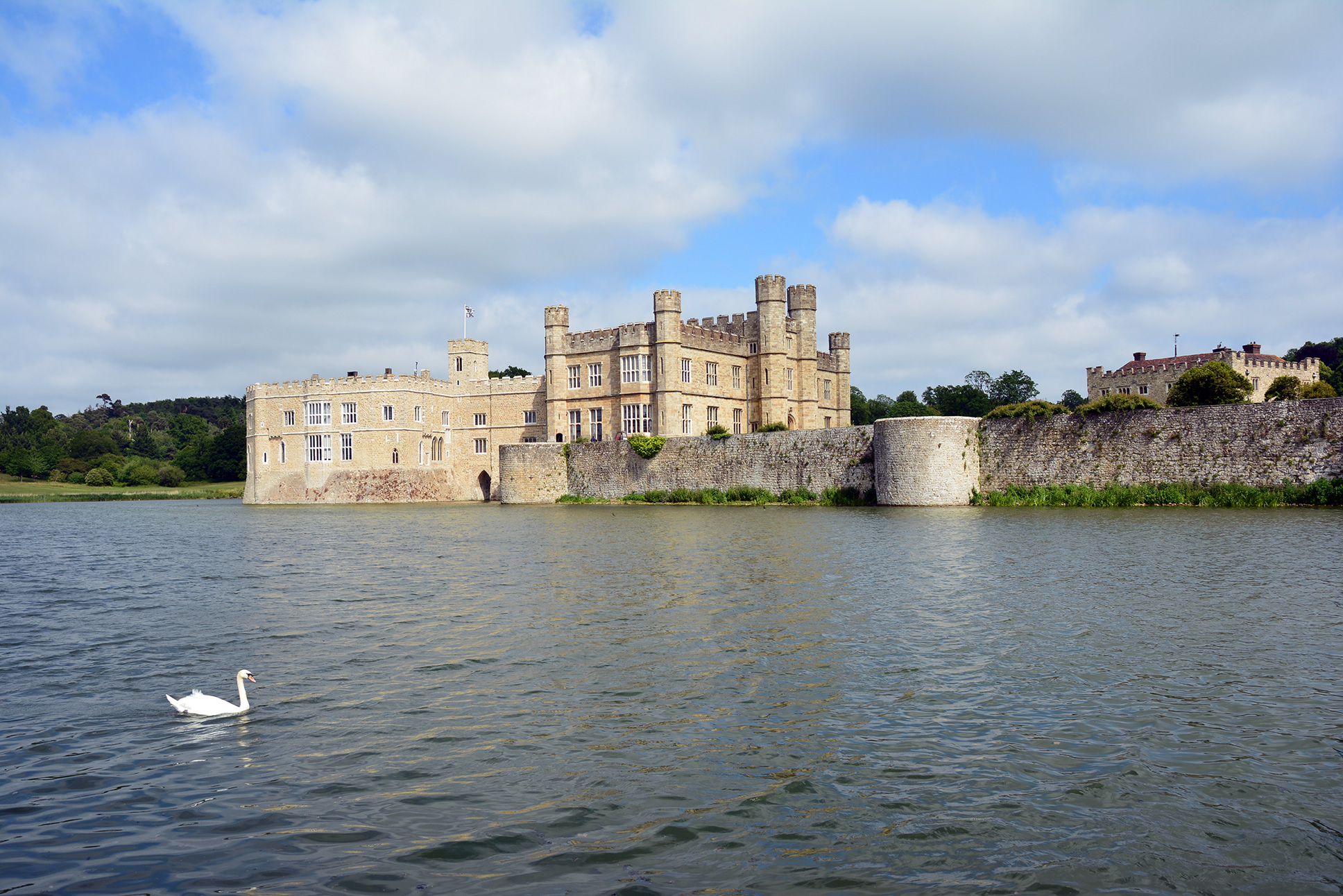Ghosts of Leeds Castle
Leeds Castle is nestled in Southeast England between London and Dover. The current structure resides on two islands in the middle of a lake. There has been a castle on this site since the 9th century and Saxon times when it was known as Esledes. The first castle was made of timber and was replaced by stone shortly after the Norman Conquest of England in 1066. Edward I, who was fond of the castle, made many improvements before giving the castle to his wife, Queen Eleanor. Edward also added the unique Gloriette, or D-shaped tower, on the second island, whose walls seem to rise from the lake. Henry VIII was also fond of the castle, making many additions to accommodate his entourage during a stay en route to France.

Leeds Castle has been a Norman stronghold, a royal residence for six of England's medieval queens, a palace for Henry VIII, and one of the loveliest castles in England. The castle has a very tranquil feel with its gardens and fairy tale setting on the lake, but it has a dark side for some occupants.
As Richard tells the story ...
Continuously added to by successive owners, a good proportion of what survives today was built as recently as 1822. By this time, the old fortress had acquired the ghostly black dog, whose appearances often presaged bad luck, or even death, for the occupants. The dog's origins lie in the demonic dabbling of Henry VI's aunt, Eleanor of Gloucester, who in 1431 was found guilty of practicing "necromancy, witchcraft, heresy, and treason" and was imprisoned at Leeds Castle for life. Perhaps the hound results from some ancient spell that this formidable lady casts and has lingered around the property ever since.
- Richard Jones
Leeds Castle has a few other resident wraiths. A woman ghost has been observed gliding along the castle corridors and is believed to be the spectral spirit of the Dutchess of Gloucester. Another female ghost in the Queen's Room has been witnessed, in a long flowing dress, brushing her hair.
Another interesting incident at the castle occurred when a woman, Alice Pollock, was in Henry VIII's rooms and was touching some objects dating from that period to try and experience events from that time. After a while, she reported that the room started to change, losing its modern-day appearance and becoming bare. Logs appeared to be burning in the fireplace, and a woman in a white dress walked back and forth in the room in deep concentration. Soon after, the room converted back to its modern appearance. Records show these rooms were once used as a prison for Queen Joan Navarre, Henry V's stepmother, accused of witchcraft by her husband.
